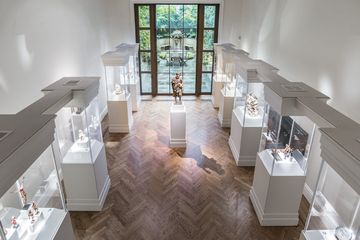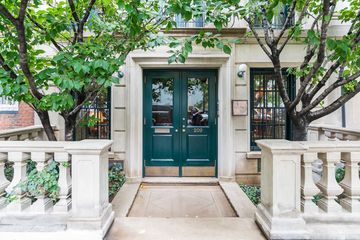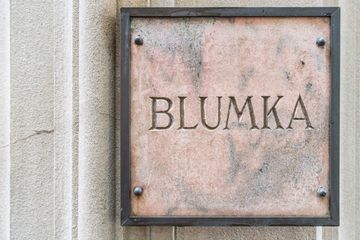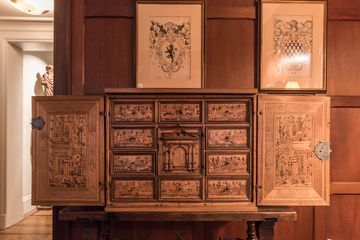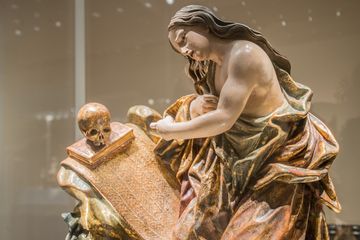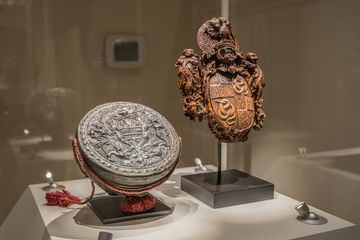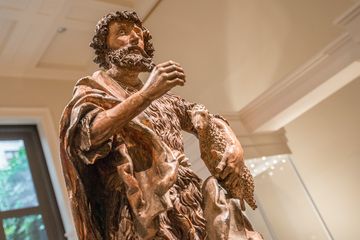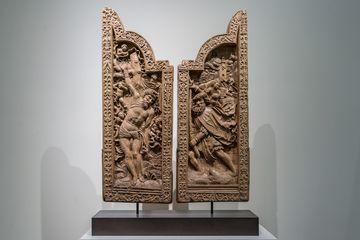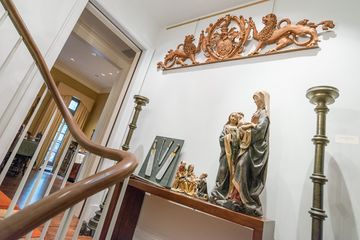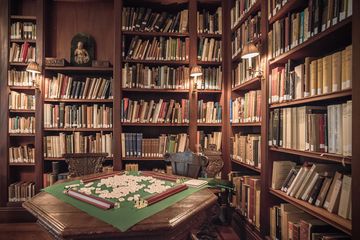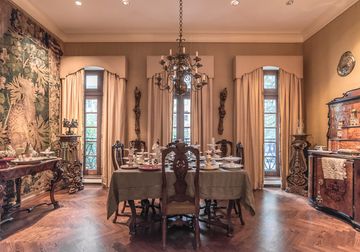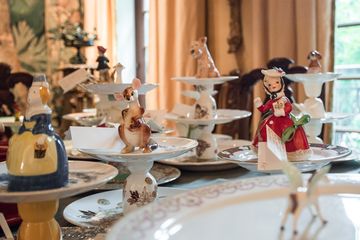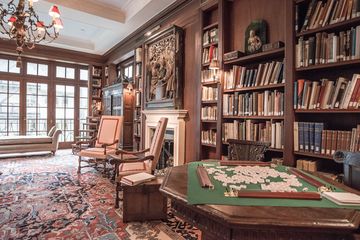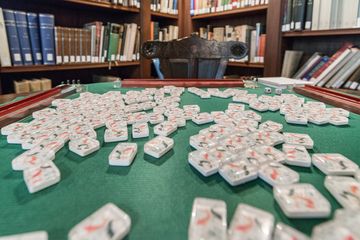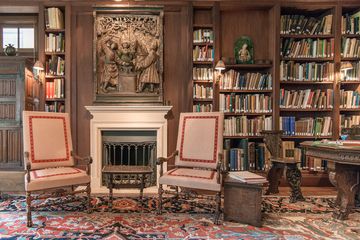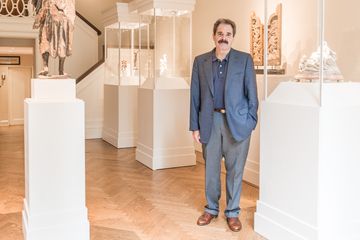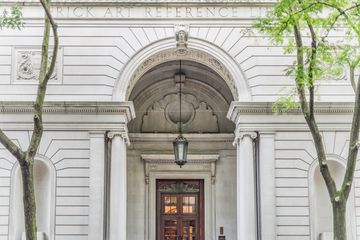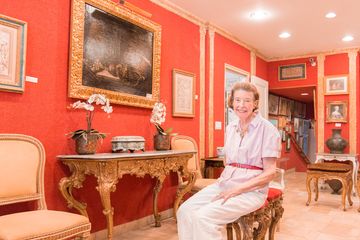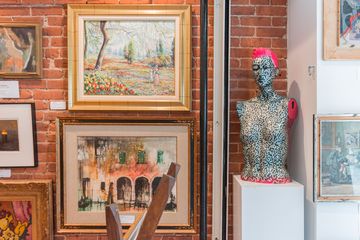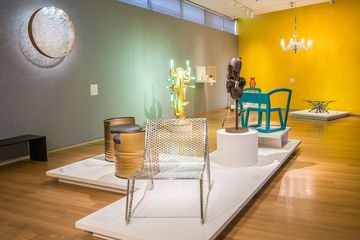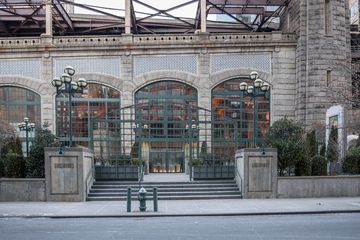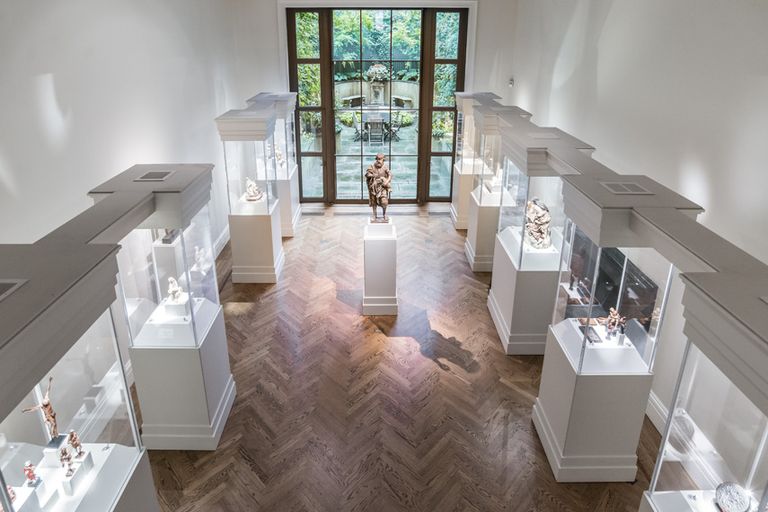
Anthony Blumka is a fourth generation art dealer. His father opened the New York iteration of Blumka Gallery in 1939 and his grandfather and great-grandfather owned galleries long before that in Austria. After excitedly ushering me into the foyer, Anthony pointed out a nineteenth century painting featuring a Viennese church and, in the background, his great-grandfather's shop.
It seems that art runs in the Blumka blood. Anthony explained that he learned a lot about the art world through osmosis rather than through direct instruction, since his father died when he was quite young. "Coincidentally, there would have been 101 years between my father and my son," he added. When I asked if the newest generation showed any aptitude for the gallery business, Anthony told me that there are no clear indications yet, but that his son is named "Quintin," which is Latin for "five" - a promising sign for a fifth generation art dealer.
Blumka Gallery's art ranges from Medieval through to Baroque. Anthony, however, is especially captivated by the medieval works. He drew my attention to a few of them, including a lime-wood Madonna and Child and sandstone figurines from the second half of the fourteenth century. His love of this period began when he was quite young: he explained that he used to collect arms and armor as a child, and that his father would always try to bring him back something for his collection when he made purchases overseas. Years later, Anthony went to school for Fine Art, but he admitted that it is not where he received most of his knowledge. "A degree is like a driver's license," he explained. "You learn to drive afterwards."
I was delighted to learn from Anthony that the early art world is collegial. There are not many galleries left in the United States that specialize in works from so long ago. "We may be one of the last ones," Anthony said, wistfully. Because of this, he has strong relationships with other early art institutions. He works very closely with a German firm from whom he gets many of his pieces and he has loaned work to many museums, including the Frick and the Cloisters. "Ten to fifteen percent of the items at the Cloisters are from us," he said with a smile.
Anthony attends multiple art fairs throughout the year, where most of the action happens: Sales are made, specialists and colleagues get together, and connections become long lasting. After spending his entire life engulfed in the art world, it appears to me that these fairs are a large part of why Anthony remains passionate about his work. There are still, however, bumps along the road. Anthony spoke to me at length about the ban on ivory being brought into the United States. "Thirty percent of my business is related to ivory...and it has nothing to do with poaching," Anthony lamented. Notwithstanding that some of the ivory he works with is a thousand years old, it still cannot be brought here. "Every church in Europe has an ivory cross," he complained, and then showed me a picture from his catalogue of "one of the greatest baroque pieces that has been on the market," which he is unable to get into our country. Anthony has made countless trips to Washington in an attempt to create an exception to the ivory ban for the sake of art.
Despite the legal issues surrounding ivory and his ongoing frustration, Anthony's business has continued to thrive, partly thanks to his reputation and that of the generations behind him. "We have always been highly respected in this field," he said with pride.
